Can one make a 'scene' without crying??
-
Hello All:
Is there a way to create scenes/animation whereby the relationship of the various components (positions, angles, variations) can be altered in each progressive 'scene' or INSTANCE, without that affecting or changing the previous scenes? In a graphics program one would use 'layers' to achieve this. However, layers in SU is an entirely different animal.
In other words, I have a constellation of object groupings/components. I need to add, subtract, change angles, scale, or reposition SOME of the components in some scenes, but not others. The camera position must remain exactly the same in each instance. The goal is to export a 2D graphic of each scene to create an animation/slideshow using film editing software.
The problem I'm having is that when I copy/paste/duplicate a particular grouping or component, that change takes effect in the previous scenes thereby completely screwing up the sequence.
The attached pics are a simplified example of what I'm trying to achieve. I was able to change the positions of the brackets by copying and pasting them, and then 'hiding' the extra copies produced in the previous scenes. However, were I want to rotate one of the brackets in scene 6 for example, the rotation happens globally, and there's no way to hide that.
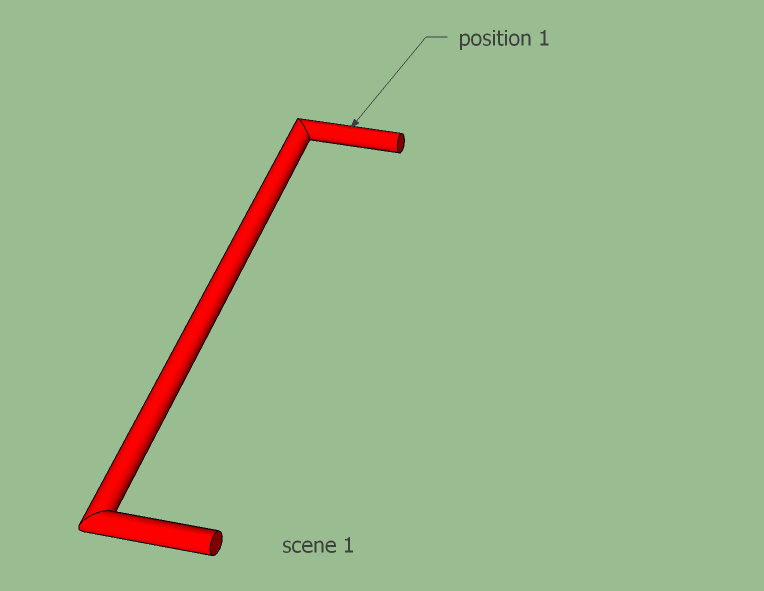
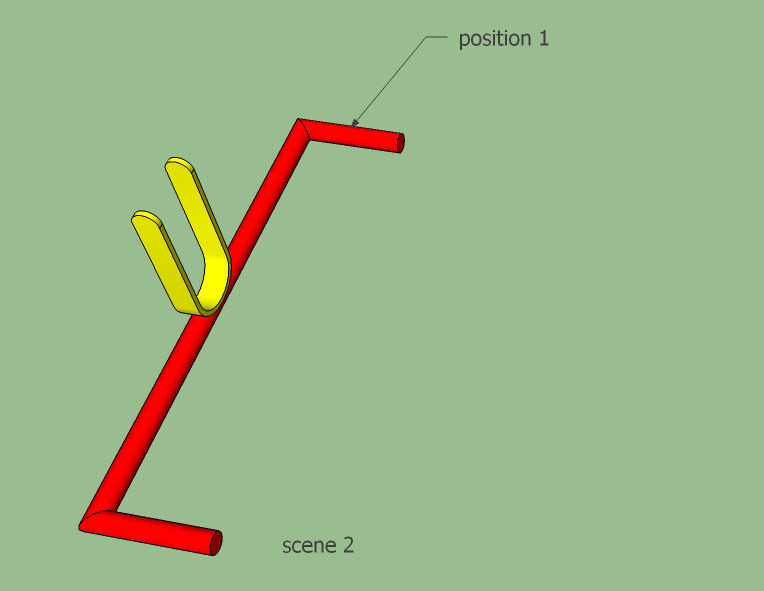
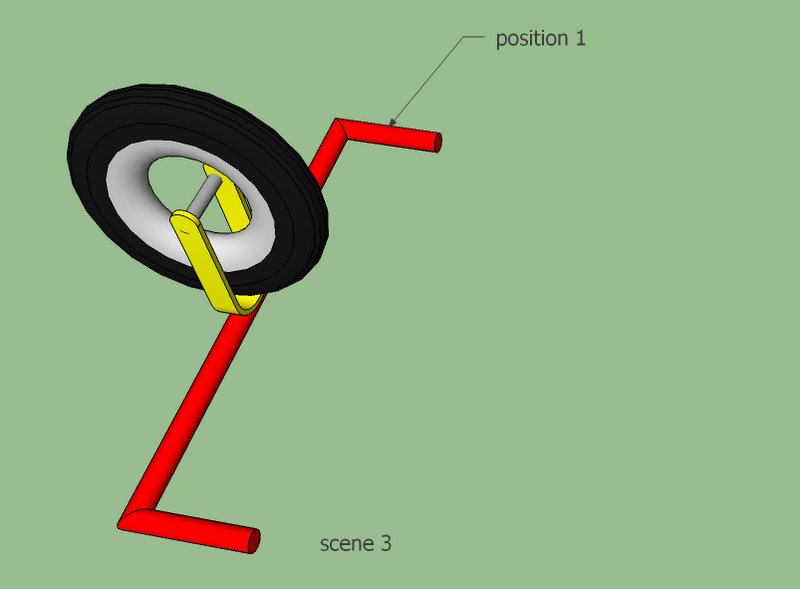
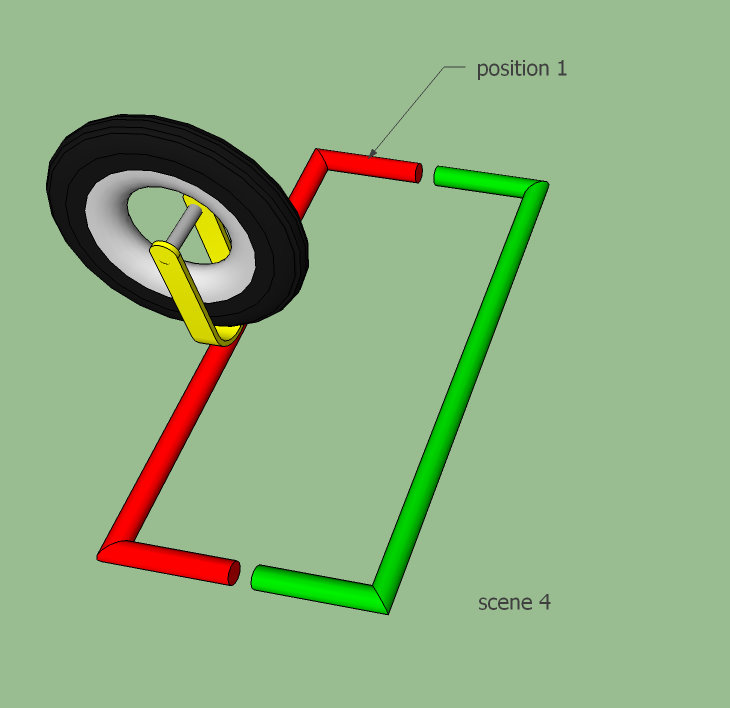
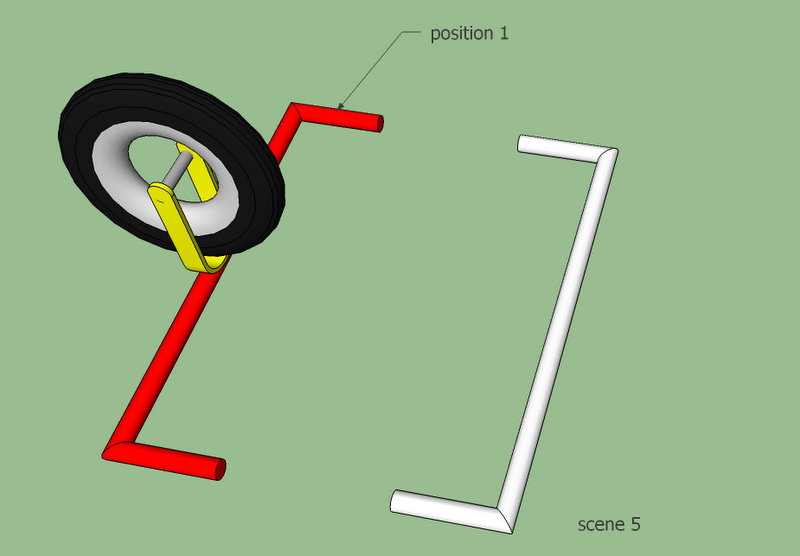
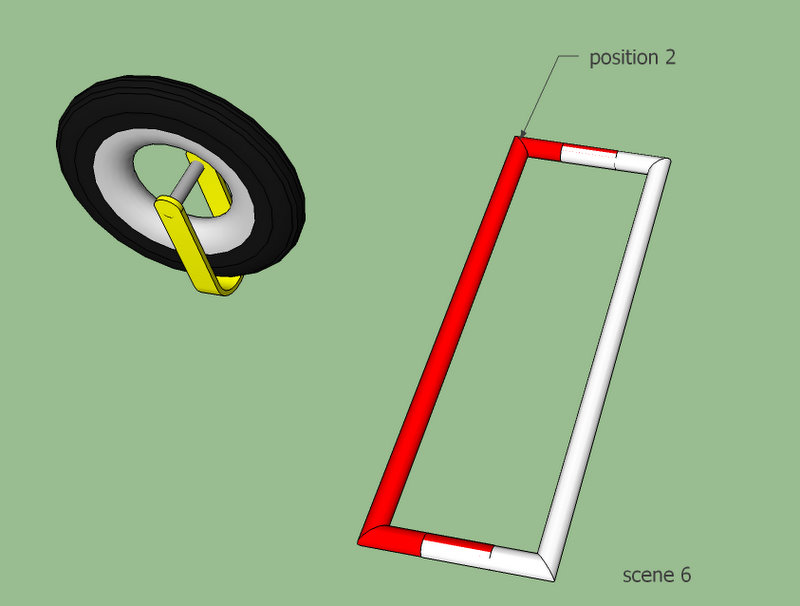
-
Use components.
Ensure that their 'contents' are all on Layer0.
Place copies where they are needed in each image - for now keep them all on Layer0.
Make a set of Layers.
Assign these Layers to the component-instances, as they are to be in their different locations - all of these layers still 'on' initially.
Make the Scene tabs for the images.
Each one duplicated from the previous one, using its context-menu to 'Add'.
Edit the Scene tabs in turn - switch 'off' the layers you don't want visible in that tab and use the context-menu on the tab to 'Update' it so its layers are remembered.
Ensure that the settings for the tabs allow for the layers to be saved with the tab.
Now when you run a test animation you should find the change between Scenes tabs shows components seemingly moving as the layers switch on/off... -
@tig said:
Use components.
Ensure that their 'contents' are all on Layer0.
Place copies where they are needed in each image - for now keep them all on Layer0.
Make a set of Layers.
Assign these Layers to the component-instances, as they are to be in their different locations - all of these layers still 'on' initially.
Make the Scene tabs for the images.
Each one duplicated from the previous one, using its context-menu to 'Add'.
Edit the Scene tabs in turn - switch 'off' the layers you don't want visible in that tab and use the context-menu on the tab to 'Update' it so its layers are remembered.
Ensure that the settings for the tabs allow for the layers to be saved with the tab.
Now when you run a test animation you should find the change between Scenes tabs shows components seemingly moving as the layers switch on/off...Thanks. I did try this previously but with no success. I create 3 component instances on Layer 0. Then place instance #1 on a layer named postion 1. Instance #2 on position 2, etc. The problem, when I toggle Position #3 off, all three instances disappear. I can render positions 1 and 2, but not #3 independently. Curious!
-
Or use something like Mover
Using scenes
Just put your object out of the the view screen as start
Maybe more easy than the Layer method and you can have an effect of "move" if transition is not 0 second
-
You must remember to update every scene-tab after all of the layers are made and assigned to objects, setting layer visibility independently for each tab AND updating the tab when done - otherwise you might get objects appearing unexpectedly.
It is fixable, but annoying...
All that a tool like Mover does is make some scene-tabs, assign layers etc to objects semi-automatically - the simple example you showed is relatively easily done manually for a few scene-tabs... -
@tig said:
You must remember to update every scene-tab after all of the layers are made and assigned to objects, setting layer visibility independently for each tab AND updating the tab when done - otherwise you might get objects appearing unexpectedly.
It is fixable, but annoying...
All that a tool like Mover does is make some scene-tabs, assign layers etc to objects semi-automatically - the simple example you showed is relatively easily done manually for a few scene-tabs...Okay. Still weeping. Floods. I understand the scene 'tabs' and 'update' functions. However, my three simple component instances remain linked, screwing up the sequencing. My actual model may contain up to 50 instances and a dozen or more components and/or object groupings. Also, placement is critical and I need move in very tight to achieve this, then pull back to the original global 'zero' camera position. It's unmanagable
 Seems to me a core deficiency in SU -- much as i love it. How does a mechanical engineer (I'm not) show the relationship and movements of parts in a progressive manner? How do you highlight a particular function or feature in a complex model, while retaining the context of the entire model, without clutter?
Seems to me a core deficiency in SU -- much as i love it. How does a mechanical engineer (I'm not) show the relationship and movements of parts in a progressive manner? How do you highlight a particular function or feature in a complex model, while retaining the context of the entire model, without clutter?I've just discovered KeyFrame Animation 7.3 Looks like this will do what I want in terms of animation. However, I still need to know how to achieve this manually, in a 'poor man's approach.' That is, sometimes I just want to export a few 'stills' sequences to place on a page somewhere. Also, the manual approach would give me greater editing control of the final film using an editing suite.

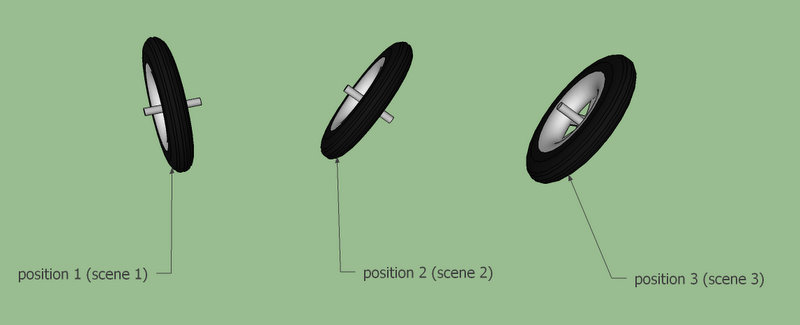
-
Sir, I am sure TIG has the explanation. But are you seeking along the same lines as this thread: http://forums.sketchucation.com/viewtopic.php?f=323&t=46261&hilit=sdmitch&start=15#p414006 ?
-
@pbacot said:
Sir, I am sure TIG has the explanation. But are you seeking along the same lines as this thread: http://forums.sketchucation.com/viewtopic.php?f=323&t=46261&hilit=sdmitch&start=15#p414006 ?
YES, indeed! The ability to make objects/groupings UNIQUE is the key. Many thanks!
-
This really shouldn't be that difficult. What you want to do can be done with the native tools. Perhaps you could post your model so we can see how you have your components, layers and scenes set up.
I made this animation using nothing but components, layers and scenes. I didn't need to make components unique. I just placed copies at the required locations and made the appropriate layer associations. Then I created the scenes with the proper layers made visible. The needle is a single component copied multiple times, so is the hook that catches the thread, the fabric and the advancing dog.
[flash=400,318:3tw8ymzh]http://blip.tv/play/gYhbgsG_bwA[/flash:3tw8ymzh]
-
@dave r said:
This really shouldn't be that difficult. What you want to do can be done with the native tools. Perhaps you could post your model so we can see how you have your components, layers and scenes set up.
I made this animation using nothing but components, layers and scenes. I didn't need to make components unique. I just placed copies at the required locations and made the appropriate layer associations. Then I created the scenes with the proper layers made visible. The needle is a single component copied multiple times, so is the hook that catches the thread, the fabric and the advancing dog.
[flash=400,318:2ikjm2rc]http://blip.tv/play/gYhbgsG_bwA[/flash:2ikjm2rc]
Thanks so much for chiming in. Your animation is most instructive! I agree completely, one ought to be able to do this with SU native tools, but for the life of me, the component 'instances' I create remain linked somehow and the changes I make 'migrate' to instances in previous scenes. My model is in complete disarray at the moment, but I'll cobble something together for show. It's really important I find a solution here because I'm losing tons of time doing work-arounds. Thanks for your help. More soon..
-
Okay. For starters. I'm making a folding dolly as shown below. I create a rotated array of the grouped components/objects, as shown-- 7 positions on LAYER 0. I then assign a layer to each position. Next I want to create scenes for each respective layer/position. HOWEVER, position #7 is mysteriously LINKED to #1 and all the others. So if I toggle #7 OFF, then everything DISAPPEARS. With #7 on, I can toggle the others on and off, but I cannot create a proper scene sequence because #7 is either there when I don't it, or not at all.. and I need #7 to continue my model design..


-
Post the model as it is. I know it's a mess or you'd have a working animation. If you don't want to post the model publicly, send it in a PM.
-
Resolved.
I had a look at Petropix's model. The problem stems from two major problems. First, extremely deep nesting of the groups in the model and second, every subgroup and even some primitives were associated with layers, sometimes different from the top group. The repair was to delete all the layers sending all the groups back to Layer 0. Then recreate the layers and make the layer associations for only the top level groups. The animation then works fine.

-
Special thanks to Dave Richards for going beyond the call of duty to explode my rigidly grouped SU Mind.
As Donald Rumsfeld famously said, one can arrive at a perfectly logical conclusion from a wrong assumption. For me that assumption was to group, group, group (avoids the nastiness of merged geometry). While that served my purposes allowing me to accomplish certain things, in the end it was my downfall.
Making components of everything is a superior way of grouping and a much more efficient way of working in SU.
That, and avoiding the pitfalls of laziness by under-estimating the power and range of SU's native tools.
Thanks, Dave!
Advertisement







